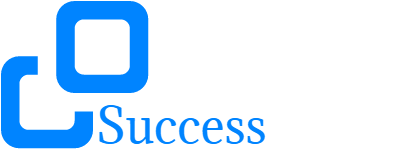Companies, organizations, and academic institutions are now embracing the learning management system, or LMS, as part of their modern learning and development strategies.
The list of LMS software is growing, as clearly implied by its increasing market value. There were over 500 LMS in the market back in 2015. The figure is now in the thousands.
A 2019 MarketsandMarkets LMS report forecasted a huge boom for the global LMS market. From $9.2 billion in 2018, the LMS software market will grow to as much as $22.4 billion by 2023.
The massive adoption and utilization of LMS software solutions will be driven mainly by businesses’ inclination towards digital learning, enterprise mobility, and the increasing prevalence of BYOD (Bring Your Own Device) at the workplace.
Your company most likely uses an LMS for employee training, onboarding, development, and other purposes. The question is, are you maximizing the value of your LMS software?
If you’re in doubt, then the following best practices will help you optimize your learning processes and strategies and generate better ROI from your LMS.
-
Adopt and Execute a Microlearning Strategy
In any business setting, knowledge and skills do matter. That said, the corporate environment is fluid and the demand for new information is constant. Employees need to learn new things every once in a while to make them more productive and efficient in their tasks.
However, a report published in the Journal of Applied Psychology explained that employees (and just about everyone) tend to acquire and retain knowledge better with microlearning. Instead of presenting hours-long courses, learners are presented with bite-sized learning materials and short training activities. The strategy is 17% more efficient than lengthy modules and lessons.
On top of that, modern learners prefer microlearning because it is short and can be tailored to their needs. When it comes to on-demand information, an employee will likely retain important information after watching a three-minute video on how to write a compelling, traffic-gravitating blog post as opposed to a 40-minute e-learning course on the same subject.
-
Gamify the Learning Process
Uninspired, dull, and boring content is a major roadblock to employee learning and development. Even if training courses contain essential and highly knowledgeable materials, one out of three employees will likely fail to see and comprehend the point.
Unimaginative delivery of learning materials and instruction is a massive barrier that prevents employee learning. But the gamification of the learning process has proven to be an effective method in increasing engagement levels but also speed up the overall learning phase and improve knowledge retention.
The incorporation of gaming elements, such as scoreboards, leaderboards, badges, and medals, empowers employees to invest in learning. By adding an element of fun and competition, gamification motivates employees to quickly learn and apply their newfound knowledge and skills in real workplace scenarios.
For instance, you can send your employees a short two-day training course on lead generation via social media on Monday. Quiz them on Wednesday. And then launch a month-long contest to determine who can generate the most leads with the winner getting an actual prize.
Gamification can also be used to keep employees’ knowledge sharp and up to date. Mobile gamification apps enable companies to send contests and short quizzes directly to their employees’ smartphones. Adding incentives and rewards will further enhance employee engagement, which will then result in faster and better knowledge acquisition and retention. That said, careful planning should be done when leading with gamification.
-
Implement Mobile-Based Learning
The advent of online learning ushered in new learning trends and training practices. It meant training and development were no longer confined within the four walls of a room. It can be done. Distance, geography, and time were no longer barriers.
The entry of mobile phones and subsequent advances in mobile and communications technologies, without a doubt, took corporate learning to higher ground. One doesn’t need a desktop to access an LMS website and retrieve all his instructions and training materials.
To fully maximize your LMS, you need to implement mobile-based learning. A smartphone is more than enough to let him learn at his own convenience and pace.
According to the Pew Research Center, the American workforce is comprised of approximately 157 million Americans. That’s 47.9% or nearly half of their total population (327.2 million). In another report by the same institute, 77% of Americans own a smartphone or roughly 252 million people.
With such data on hand, it’s almost fair to conclude that almost every working American has a smartphone. That means they all have access to mobile-based learning. This makes it easy for companies to deliver learning materials, instructions, and courses to their workers.
On the other hand, workers are able to perform training and learn at their current propensities. Since mobile phones are regarded as personal devices and not a work tool, workers are empowered to learn at their own rate – whenever they are ready. They are not pressured to learn, which actually helps accelerate their own learning.

-
Use Spaced Repetition Technique
In a sports training context, repetition of certain movements, such as a shooting stroke in basketball or a roundhouse kick, leads to muscle memory. That means when it’s done repeatedly in regular intervals, said movements become fully ingrained that they become an automatic reflex.
In theory, the brain recalls newly introduced information by refreshing it periodically. Such practice can also be applied in learning. Spaced repetition technique involves showing people the same information at increasingly long intervals.
For instance, James has just learned that the capital of the United States is Washington D.C. With the spaced repetition technique, he will be shown this information again tomorrow, then in three days, then in a week, until it becomes fully embedded in his knowledge bank.
Using your LMS, you can configure and implement the spaced repetition technique at the workplace. You can configure the software to display certain information to your workers at your preferred intervals. To test their knowledge, you can set the software to remember which answers your employees got wrong so it can focus on that information.
Spaced repetition effectively minimizes the likelihood of information being forgotten. Utilizing the said technique with your LMS will surely improve knowledge retention among your employees.
Evaluate Your Existing LMS
Is your LMS user-friendly or difficult to navigate? Does it have rich and dynamic analytics? How about customer service? Does your LMS provider/vendor supply you knowledgeable and tech-savvy support agents? You need to squarely answer these questions and more to determine if you have an ideal LMS software or if you need to move on to a new one.
Investing in an LMS is not a light business issue. The 2018 State of the Industry report from the Association for Talent Development (ATD) revealed that companies are spending an average of $1,296 per employee every year for learning, training, and skills development. Meanwhile, 41% of the expenses goes to learning technologies, LMS included.
Checking learning management system examples and demos is not going to cut it. Given how the demand for learning in the workplace will grow and the LMS market value is set to increase in the future, investing in the right LMS software from the get-go should be an utmost priority. Since there are various LMS pricing models to choose from, you can surely find one that suits your needs.










